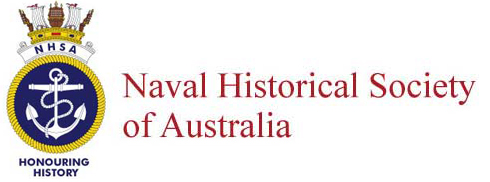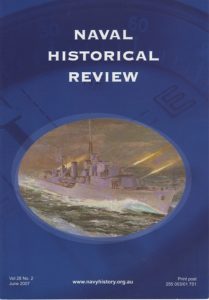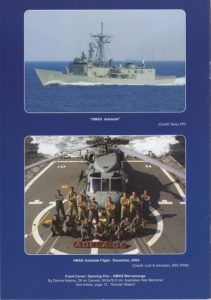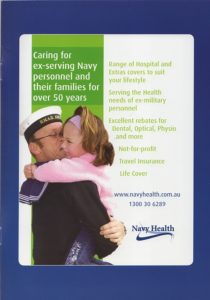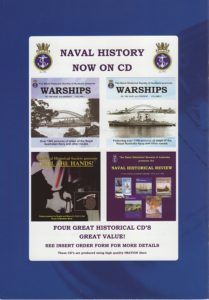- Author
- Editorial Staff
- Subjects
- History - general, Biographies and personal histories, Ship histories and stories
- Tags
-
- RAN Ships
- HMAS AE1, HMAS Fantome, HMAS Penguin I, HMAS Psyche
- Publication
- September 2024 edition of the Naval Historical Review (all rights reserved)
A tribute to the memories of Signalman Frederick Randall RN and Able Seaman John Reardon RN and RAN, who as young men contributed to the establishment of the Australia Station.
With growing prosperity, the Australian colonies needed, in fact demanded, greater political attention from their Imperial masters. One of the outcomes was the establishment of a separate naval command known as the Australia Station, which encompassed New Zealand. The first incumbent was Commodore William Loring who hoisted his broad pennant in the sailing frigate HMS Iris on 26 March 1859. In 1884 the position was elevated to flag rank with the appointment of Rear Admiral George Tyron in the armoured cruiser HMS Nelson. Further recognition was achieved on 16 January 1903 with the appointment of Vice Admiral Sir Arthur Fanshawe hoisting his flag in the first class protected cruiser HMS Royal Arthur.
When HMAS Australia entered Sydney Harbour on 4 October 1913 flying the flag of Rear Admiral Sir George Patey, the new Commander-in-Chief of the Australia Station, the outgoing C-in-C Admiral Sir George King-Hall struck his flag in HMS Cambrian, thereby ending 125 years of continuous Royal Naval presence in our waters.
Manning the Station
We recently received a copy of the autobiography of Frederick Randall who had a lengthy career with the Royal Navy, starting as a 16-year-old Ordinary Seaman in October 1907 and finishing as a Master at Arms in 1946. This was dictated by the author shortly before his death at Dundee, Scotland in 1963. It is noteworthy that Fred’s son Frederick Charles Randall joined the RN as an Artificer Apprentice in 1935, serving in various electrical engineering roles throughout WWII and reaching the rank of Warrant Officer. In 1948 he served for two years as a commissioned officer on exchange with the RAN. In 1960 Frederick Charles Randall joined Garden Island Dockyard as a Maintenance Engineer and the following year was granted a residence on the Island. He lived there until he retired in 1985.
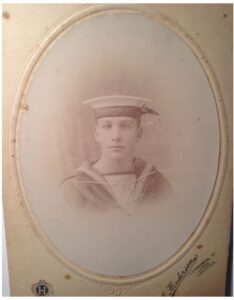
Fred’s son Colin lived with the family at Garden Island and was schooled at Sydney Boys High. His morning routine was to catch the stores truck from the Island going to Randwick Naval Stores which would drop him near the school. Colin did not follow the family tradition into naval service but it is Colin Randall who has favoured us with his grandfather’s unpublished work.
Able Seaman Signalman Frederick Randall RN
Frederick Randall was born on 3 January 1891 in the industrial city of Leeds in the north of England. He shone at school and had sufficient aptitude to sit for a scholarship to the local grammar school with the aim of becoming an architect. But with the economic necessities of those times his parents wanted the children out earning a living and so after a couple of attempts young Fred joined the Royal Navy in October 1907 as an Ordinary Seaman when he was 16 years and 9 months old.
He was first posted to the training ship HMS Ganges before making the grade to the Portsmouth School of Signals. Here he won the prize telescope for the fastest accurate messages sent and received by flags and morse code. He carried this engraved telescope with him for the rest of his life and it is now in the safe keeping of his grandson Colin. After passing out as a Signalman in January 1909 on a wage of eight shillings and ninepence per week (of which five shillings was allotted to his mother) he volunteered for foreign service. He was soon on his way in the elderly cruiser HMS Siriuswhich, with her sister HMS Sappho, had been taken out of reserve for trooping duties. They sailed from Chatham on 19 January 1909 bringing relief crews for ships of the Australia Squadron, with the exchange of crews being made at Colombo.
Fred’s next ship HMS Pegasus arrived at Colombo 23 February 1909 where she was decommissioned and her original crew departed, to be relieved by a new crew and recommissioned under CMDR G.C. Quayle with a complement of 234 officers and men. In company with the survey vessel HMS Sealark, Pegasus departed Colombo on 9 March 1909 bound for Sydney.
Shipping news published in The Times informs that on 5 October 1909 the cruiser HMS Terrible arrived at Plymouth with relief crews from Cambrian, Flora, Pegasus and Pioneer, ships of the Australia and China Stations.
Fred Randall has compressed his brief experience on the Australia Station into the following words:
I volunteered for foreign service and in January 1909, I was on my way to HMS Pegasus in Australia. We went to Colombo in HMS Sirius, an old tub of a ship that wanted cleaning up from Reserve. I and three other signalmen were lifebuoy sentries on the quarterdeck during the passage to Colombo. One of these four found that he could reach a swinging table in the Captain’s cabin on which there was a carafe of whiskey but he was caught and punished. At Colombo HMS Pegasus was waiting for her new crew. A lovely clean ship compared to what we had left but with a captain and officers who ranked with Captain Bligh of the Bounty. After three weeks we got alongside the dockyard at Garden Island Sydney. All I saw of Sydney was through a telescope for I never had enough money to go ashore.
After a refit at Garden Island we sailed for the South Sea Islands. For a whole year we visited islands. If the missionary had been eaten retribution followed by the village being burned and all the livestock shot. If still alive we got fresh meat and vegetables.
For nearly 12 months we wandered round the South Sea islands. Stocks of food ran out due to the deprecations of a Paymaster and a ship’s steward who between them had sold quite a lot of provisions, I was never anything else but hungry and would wait for the edges of bread from the officer’s galley in the evening. We had to call at various places to coal but except for wandering around the places that was all I could do for I had no money.
We got back to Sydney eventually and I sat my examination for Signalman and passed. My pay was then 11/4 a week but still 5/- went to mother. By now it was 1910 and I and three others in the Signal Staff were transferred to the flagship HMS Powerful. I remember the trip from Hobart to Fremantle in Western Australia. It took four days across the Great Australian Bight.
Two ships manned by Australian crews were with the Powerful. So high was the seas that we did not see them for three days. We lost all our boats and staggered into Fremantle a wreck. There we heard of the death of Edward the Seventh. Then came the Agadir scare in North Africa and the Admiralty wanted Signal ratings home so 28 were divided from the Australian Fleet and came home in P&O China (passenger liner SS China) which was afterwards a hospital ship in the Great War.
Able Seaman Torpedoman John Reardon RN and RAN
The Reardons were farming stock from near the old whaling settlement of Kaikoura, about 100 miles north of Christchurch, and many of the family found seasonal work on fishing vessels. John Reardon was born here on 9 February 1891. After elementary schooling at the age of 16 John had had some part-time employment in the fishing industry. He noticed an advertisement in the local newspaper calling for recruits to join HMS Pioneer, a small cruiser then allocated to patrol duties in New Zealand waters. With New Zealand then in the midst of an economic depression he answered the advertisement and was called for an interview when the ship was at Lyttleton. After a brief interview and medical assessment, he was welcomed aboard on 21 November 1907 as a Boy 2nd Class – the lowest rank in the Royal Navy. The initial engagement was for five years, after which the not inconsiderable sum of £250 (about $AUD60,000 today), would be credited to his savings bank account.
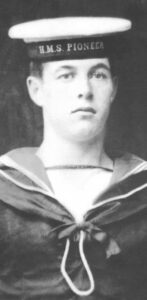
John settled in, becoming a well-respected member of Pioneer’s ship’s company and on his 18th birthday was promoted to Able Seaman. Some great excitement must have come to the ship in early 1909 as Pioneer, under command of CMDR William Blunt RN, made a lengthy voyage from New Zealand to Sydney and thence Colombo for an exchange of her RN crew. Locally enlisted men such as John remained with their ship, becoming old hands.
John was still in this ship in January 1910 when a distress call was received from the Union Steamship Company ship Waikare which with 141 passengers and 85 crew had hit an uncharted rock in Dusky Sound. Pioneer was sent to assist and helped rescue all passengers and crew. For this John was awarded £12/10/- prize money.
Pioneer returned to Sydney in October 1912 and was gifted to the fledgling Australian Naval Forces, and on 1 March 1913 was commissioned as HMAS Pioneer.
With 13 other Pioneer crew John had joined the RAN and in addition he had volunteered for the submarine service. Accordingly, they found themselves posted to the cruiser HMS Challenger which was returning to England with sailors destined to man the new RAN ships now under construction in British shipyards.
The submarines AE1 and AE2 were launched on 22 May and 18 June 1913. They had complements of 35 officers and men and John was the only New Zealander in AE1. After initial training and trials both submarines sailed from Portsmouth on 2 March 1914 and after 83 days, the longest such voyage then completed by submarine, they reached Sydney on 24 May 1914.
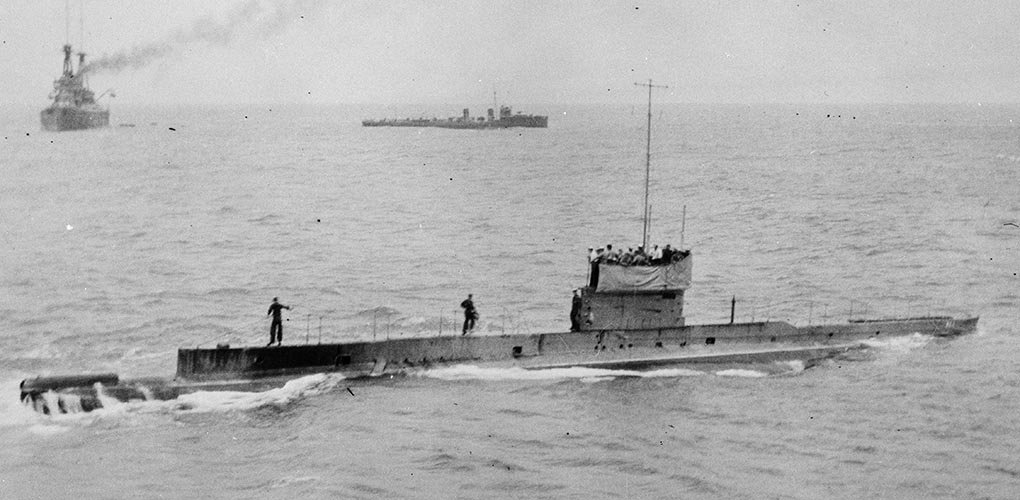
When war was declared against Germany on 5 August 1914 AE1 was prepared for war service as part of the Australian Naval & Military Expeditionary Force to neutralise German possessions in New Guinea. Tragically, AE1 was reported missing on 14 September 1914 when on patrol off the Duke of York Islands in New Guinea. The vessel was unable to be located and there were no survivors.
After just seven months of service the RAN had lost its first vessel in the Great War and John, who was just 23 years of age, was the first New Zealander to lose his life on active service in this conflict. The first RAN casualty was Able Seaman William George Williams who was part of a landing party from HMAS Sydney involved in the Battle of Bita Paka in New Guinea. Williams died of wounds on 11 September 1914. It was not until more than a century later, in December 2017, that the wreck of AE1 was located.
We do not know if Frederick Randall and John Reardon knew one another but as they were of near identical age, started naval service at the same time, and were both in Colombo together at the same time, in the same squadron, it would appear likely to have happened.
Ships on the Station
Serving in the Australia Station in the early 1900s must have presented significant problems of assimilation with the newly created Commonwealth Naval Force and its transformation into the Royal Australian Navy. Other than the flagship Cambrian, an aged protected cruiser, the mainstay of the last squadron was five smaller Pelorus-class cruisers – Pegasus, Pyramus, Pioneer, Prometheus and Psyche, plus a couple of survey vessels. The Pelorus class were not highly regarded with Rear Admiral Sir William Creswell, the First Naval Member of the Australian Naval Board, describing them as ‘the unspeakably useless P-class’.
Five ships, the second-class cruiser Encounter and the third-class cruisers Pioneer and Psyche and the survey sloops Penguin and Fantome, were all transferred to the fledgling RAN. Generally, the ships allocated to the Australia Station were not of the latest design and many were approaching obsolescence. An exception was the flagship Powerful. She was a large ship at 528 feet in length, displacing 14,200 tons and with four triple expansion engines each driving a propeller shaft, she could achieve a maximum speed of 22 knots. She carried enough coal to provide a range of 7000 nm and was well armed with 2 x 9.2-inch and 12 x 6-inch guns, plus many of smaller calibre. She was expensive to run, claiming a complement of 894 officers and men, more than a battleship of those times.
Powerful was first assigned to the China Station before transferring to the Cape at the time of the Boer War where she landed a Naval Brigade, and with ship’s guns they were part of the successful Relief of Ladysmith. In 1905 she became flagship of the Australia Squadron and took on a replacement crew at Colombo on 10 October 1907. A then little-known Sydney Morning Herald journalist, Charles Bean, joined the ship in August 1908 and sailed to Auckland to greet the American Great White Fleet of 16 large ships. Bean wrote of his experiences in With the Flagship in the South, published the following year at his own expense. Bean was a significant advocate of an Australian Navy.
When Powerful was recalled home in December 1911 she was relieved by a similar but newer ship, HMS Drake. When first commissioned in 1903 she was the flagship of Prince Louis of Battenberg, father of the future Admiral of the Fleet Earl Mountbatten of Burma. While she was the largest, fastest and most powerful Royal Naval vessel to have served on the Australia Station her service was brief and she returned to England in January 1913. With her departure the flag of Admiral Sir George King-Hall was transferred to the lesser second-class cruiser Cambrian, the last in line of Royal Naval flagships on the Australia Station.
In the early morning of 5 January 1909 the pinnace from the cruiser Encounter carrying 60 sailors left its ship bound for Man-o-War steps where they were to disembark for road transport to the Sydney rifle range. While rounding Mrs Macquarie’s Chair the boat was struck by the coastal steamer Donmore. The pinnace capsized throwing the bluejackets into the water. Many of the sailors were unable to free themselves from slung rifles and other heavy accoutrements, and as a result fifteen were drowned.
Encounter was employed in New Guinea and the Pacific Islands during the early days of WWI. On 12 August 1914 she captured the steamer Zambesi, the RAN’s first prize of war, and fired the first offensive shots of the war when shelling an enemy-held ridge in New Britain on 14 September 1914.
Pelorus-class cruisers
The workhorses of the Station were five unglamorous Pelorus-class third rate cruisers Pegasus, Pyramus, Pioneer, Prometheus and Psyche. These relatively small vessels had been designed for colonial patrol work but were lively sea boats, had cramped accommodation and were plagued by mechanical defects. Notwithstanding these problems many saw lengthy service. While specifications varied slightly in this class, they were generally 314 feet in length, displaced 2200 tons and were fitted with two triple expansion engines driving two propeller shafts, giving a top speed of 20 knots. Their main armament comprised 8 x 4-inch guns and they had a complement of 224 officers and men.
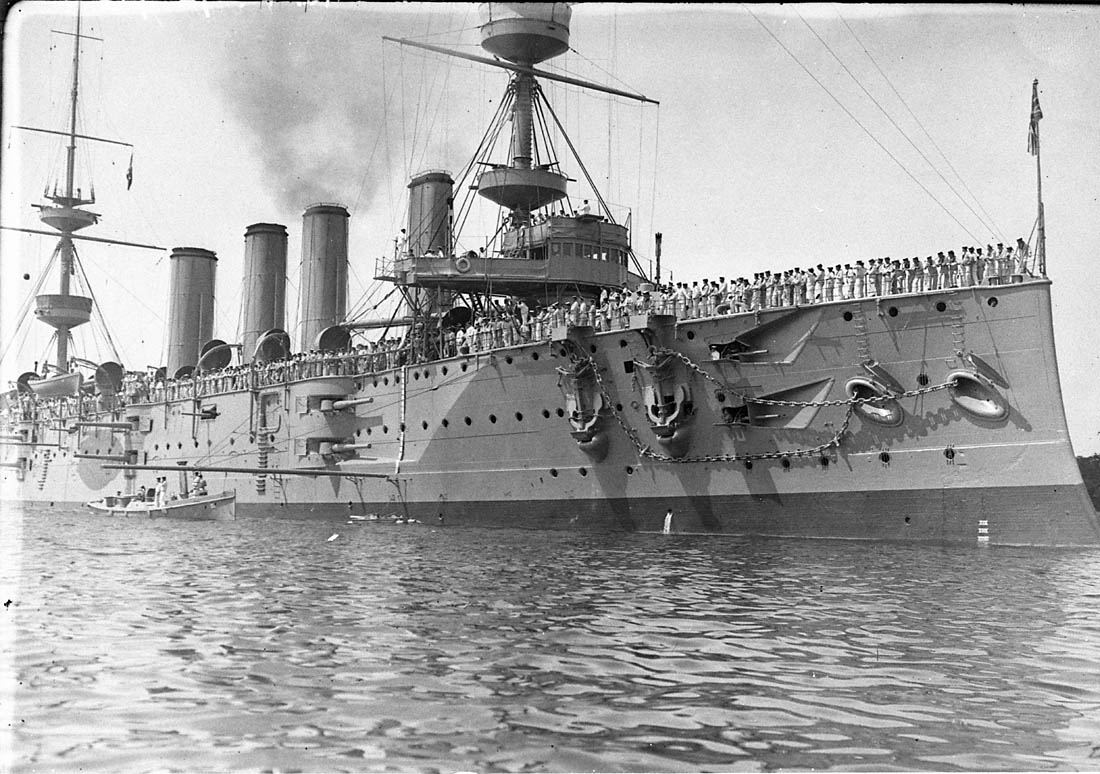
At least one and sometimes two of these small cruisers were to be found in New Zealand waters and they frequently visited Pacific islands where there was growing rivalry between the competing interests of Britain, France and Germany. At the request of civil authorities, the navy continued to be involved in punitive expeditions. One such incident in October 1909 involved Pegasus where she landed a shore party at Talamaco in the New Hebrides which attacked and burnt a native village, shot pigs, felled coconut trees, broke garden fences and destroyed vegetable crops. While the intention was to deal with individuals responsible for outrages, unfortunately punitive expeditions often involved whole tribes.
Two of these cruisers, Pegasus and Pioneer, were involved in operations in German East Africa, specifically against the German cruiser SMS Königsberg, a near sister of the more famous Emden. Pegasus came to an inglorious end on 20 September 1914, being sunk off Zanzibar by Königsberg. Pioneer arrived later off German East Africa with other RN ships on 6 February 1915. After a fruitless search for enemy ships, on 6 July 1915 Pioneer was involved in a bombardment with RN monitors of German positions.
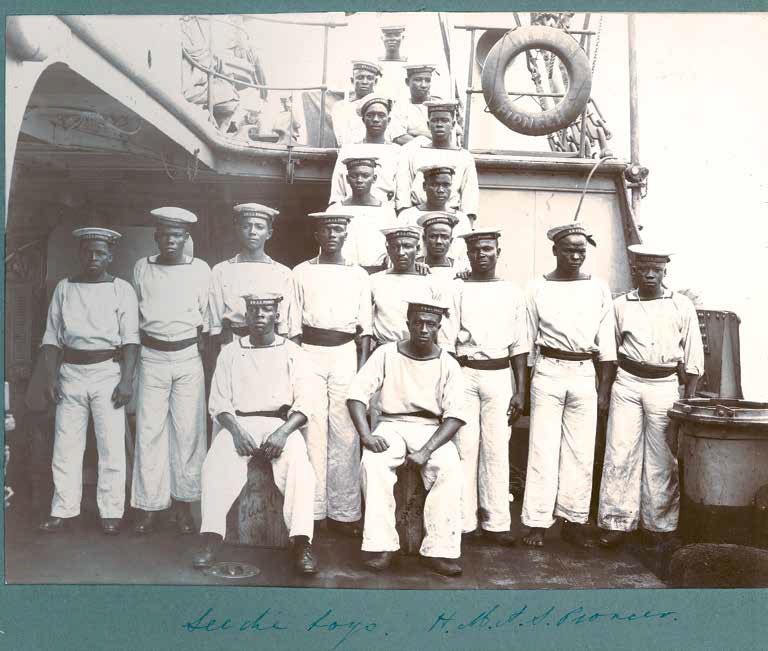
Eventually Königsberg was destroyed and the main fleet dispersed but Pioneer remained on station carrying out blockade duties and bombardments. In March 1916 she was involved in the dispatch of a German hospital ship suspected of carrying contraband, after her crew had evacuated the ship.
In October 1916 Pioneer returned to Australia and was paid off. Ironically, for an old, decrepit and obsolete vessel, the ‘Unspeakably Useless’ Pioneer, in the words of the official historian ‘saw more actual fighting and probably fired more rounds in the cause of actual hostilities’ than any other ship of the Australian Squadron.
The final ship of the Pelorus class to be transferred to the RAN was Psyche. She had been on the Australia Station since 1903 and was involved in the capture of German Samoa, but she was then paid off in January 1915. In July 1915 she recommissioned as HMAS Psyche and saw continued service in the Far East and off the Australian northern coast. She was decommissioned in Sydney on 26 March 1918 and sold out of service.
The Survey Sloops Fantome and Penguin
Two more ships transferred from the RN to the RAN had both been used in invaluable survey work, mostly off the poorly charted Queensland coast. The sloop Fantome was recommissioned as HMAS Fantome on 27 November 1914 and then fitted out for patrol duties, first in New Guinea and later the Far East.
Fantome was paid off in Sydney on 14 January 1919 when she reverted to Royal Naval service again as a survey ship.
After many years of survey work the sloop Penguin was paid off in Sydney on 31 March 1907 and converted into a depot ship for use at Garden Island where she was recommissioned into the RN on 1 January 1909. When the Admiralty relinquished control of Garden Island to the Commonwealth in 1913 she became part of an overall transfer of assets to the Commonwealth. She was recommissioned as HMAS Penguin on 1 July 1913 and remained a depot ship at Garden Island until her disposal in 1923.
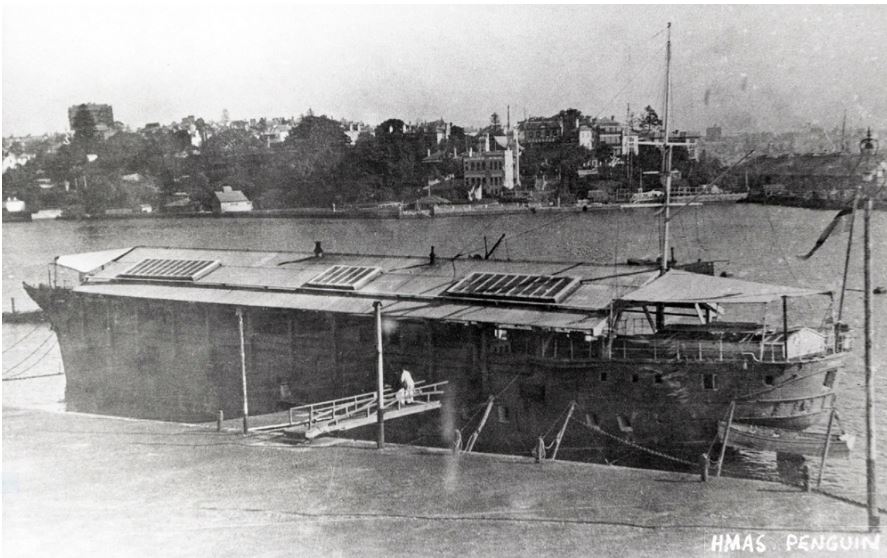
Conclusion
The final years of the Australia Station must have been exciting and not without difficulties as the Royal Navy wound down its commitment in the southern seas with the newly formed Commonwealth of Australian States accepting responsibilities of nationhood for its own defence. All this was being achieved at the time when the world was falling into an abyss and preparing for a great war.
Two young men from opposite side of the globe, born at similar times and both falling victims of economic circumstances, found themselves entering the Royal Navy and serving on the Australia Station. One was to continue in naval service for more than forty years, the other tragically had his life cut short but remains an important character in the history of the Royal New Zealand Navy and the Royal Australian Navy submarine service.
We finally painted a brief thumbnail sketch of early ships serving on the Australia Station, especially focusing on those that transferred to the Royal Australian Navy and provided a firm basis of culture and traditions on which we flourished.
References
Bach, John, The Australia Station, New South Wales University Press, Sydney, 1986.
Bean, C. E. W., With the Flagship in the South, William Brooks & Company, Sydney, 1909.
Bastock, John, Ships on the Australia Station, Child & Associates, Sydney, 1988.
Hunter, James, Able Seaman John Reardon RANR, Signals Magazine No 126, Australian National Maritime Museum, Sydney, March 2019.
Jones, Colin, Australian Colonial Navies, Australian War Memorial, Canberra, 1986.
Pelvia, Richard, The Royal Australian Navy, Department of Veterans’ Affairs, Canberra, 2012.
Randall, Frederick, Master at Arms, unpublished autobiography, August 1963.
